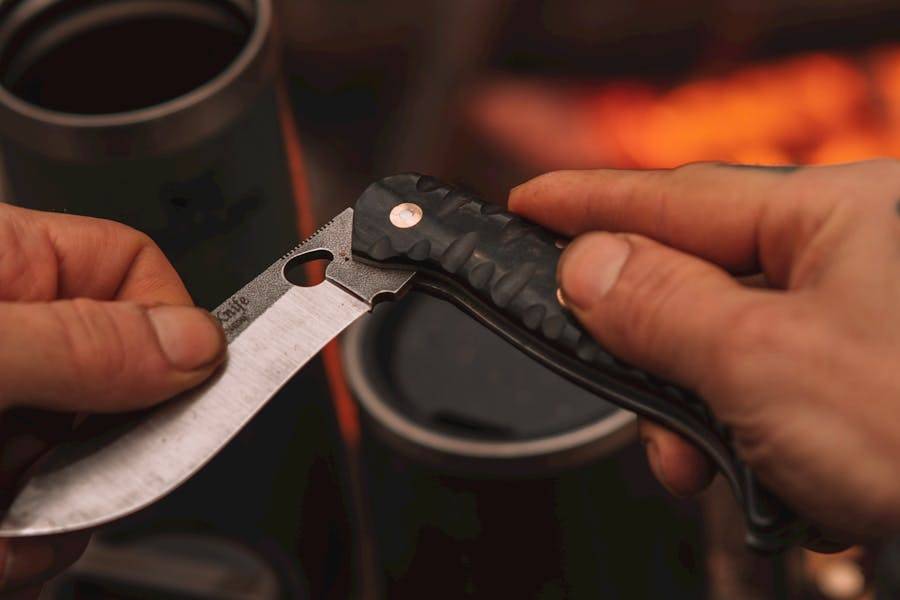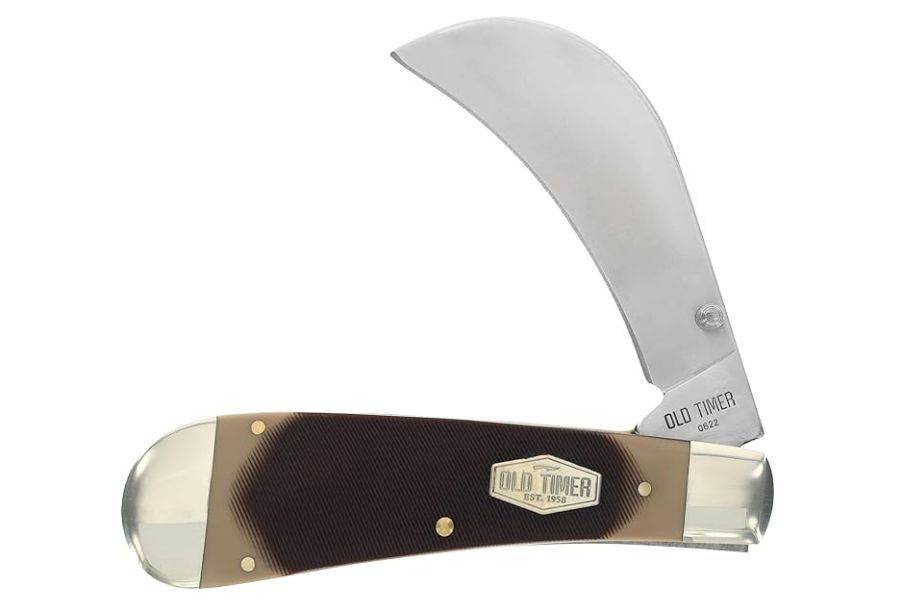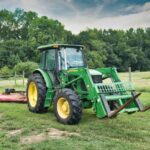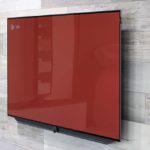Table of Contents
Sharpening a curved blade can be a daunting task, even for experienced knife enthusiasts.

The unique shape requires special attention and techniques to ensure the edge is uniformly sharp along the entire curve.
This comprehensive guide will walk you through everything you need to know about sharpening curved blades, from selecting the right tools to mastering advanced sharpening methods.
The Basics of Curved Blades
Understanding Curved Blade Geometry
Curved blades, often found in knives like kukris, hawkbills, and certain gardening tools, feature a concave edge that offers unique cutting advantages.
This geometry requires specific sharpening approaches to maintain the blade’s effectiveness and prolong its life.
Importance of Maintaining a Sharp Edge
A sharp edge is crucial for the performance of any knife but is especially vital for curved blades due to their specialized applications.
A well-maintained edge ensures precision cutting, reduces the effort needed to make a cut, and minimizes wear on the blade.
Preparing to Sharpen a Curved Blade
Selecting the Right Sharpening Tools
Choosing the appropriate sharpening tools is essential.
For curved blades, options include rounded sharpening stones (also known as slip stones), flexible strops, and specialized curved blade sharpeners designed to accommodate the blade’s arc.
- Rounded Sharpening Stones (Slip Stones): Ideal for following the contours of curved blades, available in various grits for different stages of sharpening.
- Flexible Strops: Used for polishing and refining the edge after sharpening; can be used with or without honing compounds.
- Curved Blade Sharpeners: Some manufacturers offer tools specifically designed for sharpening curved blades, which can simplify the process.
- Honing Rods: For regular maintenance and minor touch-ups; look for a rod that’s long enough to handle the curve of your blade.
- Diamond Sharpening Rods: Excellent for hard steel blades, offering quick material removal and lasting durability.
- Bench Stones: While typically flat, they can be used with careful technique to maintain the curvature of the blade.
- Electric Sharpeners: Some models are equipped to handle curved blades; ensure compatibility before use to avoid damaging the blade.
- Leather Belts or Straps: For stropping; they offer flexibility to match the blade’s curve, removing burrs and polishing the edge.
- Angle Guides: Although not a sharpening tool per se, angle guides can help maintain a consistent angle while sharpening curved blades manually.
- Water Stones: Preferred by many for their gentle sharpening action and ability to create a very fine edge; they require soaking before use.
Selecting the appropriate tool will depend on the specific needs of your blade, including the degree of sharpness required and the blade’s material.
Setting Up Your Sharpening Station
Your sharpening station should have a stable, flat surface with adequate lighting. Ensure all your tools are clean and ready for use.
If using water or oil stones, prepare them according to the manufacturer’s instructions.
Sharpening Techniques for Curved Blades

Using a Sharpening Stone
Start with a coarse grit to reshape or repair any imperfections and progressively move to finer grits for a sharp edge.
The key is to maintain the angle of the blade consistent with the stone, adapting your movements to follow the curve.
Employing a Honing Rod
For minor touch-ups and maintenance, a honing rod can be used.
The technique involves holding the rod at the desired angle and sweeping the blade across it, paying special attention to follow the curvature precisely.
Curved blades, such as those found on certain knives and tools, require specialized attention due to their arc.
The curvature can make it challenging to achieve a consistent edge when compared to straight-bladed counterparts.
The key lies in maintaining the correct angle and adapting your method to follow the blade’s natural curve.
Adapting Sharpening Techniques
Following the Curve
- Consistency is Key: Maintaining a consistent angle relative to the blade’s surface is crucial. This might involve altering traditional sharpening motions to accommodate the blade’s curvature.
- Gradual Progression: Start with working on removing any nicks or imperfections along the edge, which might involve starting at one end of the curve and gradually working your way to the other, ensuring that you’re maintaining the blade’s original shape.
Achieving Uniform Sharpness
- Edge Inspection: Frequently check the edge for uniform sharpness. This can be done visually or by carefully feeling along the edge (taking care not to cut yourself). Look for any dull spots that might need additional work.
- Angle Adjustment: Due to the curve, you might find that you need to slightly adjust the angle as you move along the blade to keep the edge consistent. This requires a bit of practice to perfect.
Refinement and Polishing
- Finer Details: Once the basic shape of the edge has been restored and sharpened, refining and polishing the edge can help to remove any lingering burrs and ensure a razor-sharp finish. This usually involves using a finer medium and lighter pressure.
- Final Inspection: A thorough final inspection ensures that the entire length of the curved edge has been evenly sharpened and polished, ready for use.
Tips for Success
- Patience and Practice: Sharpening curved blades can be more time-consuming and requires patience. Don’t rush the process; take your time to learn how the blade responds to different movements.
- Learning Curve: If you’re new to sharpening curved blades, consider practicing on older or less valuable pieces to hone your skills without the fear of damaging a favorite tool.
Advanced Sharpening Methods

Stropping for a Finer Edge
Stropping on leather after sharpening removes any remaining burrs and polishes the edge.
Use a flexible strop to accommodate the blade’s curve, moving the blade away from the edge in a sweeping motion.
Using Electric Sharpeners with Curved Blades
Some electric sharpeners are equipped to handle curved blades. If opting for this method, ensure the device is compatible and follow the manufacturer’s guidelines to prevent damaging the blade.
Common Mistakes and How to Avoid Them
Applying Too Much Pressure
Excessive pressure can lead to uneven sharpening and potentially damage the blade. Use a light, consistent pressure throughout the sharpening process.
Ignoring the Blade’s Curve
Failing to adapt your sharpening technique to the blade’s curve can result in an improperly sharpened edge. Always ensure your motions complement the blade’s natural shape.
Caring for Your Curved Blade Post-Sharpening
Cleaning and Storing Your Blade
After sharpening, thoroughly clean the blade to remove any residue. Dry it completely to prevent rust and store it in a dry, safe place.
Routine Maintenance Tips
Regularly inspect your blade for dullness or damage, and hone it as needed between full sharpening sessions to maintain its edge.
Sharpening Different Types of Curved Blades
Kitchen Knives
Curved kitchen knives, such as santokus or boning knives, benefit from regular honing and periodic sharpening to handle precision tasks efficiently.
Gardening Tools
Gardening tools with curved blades, like pruning shears, require special attention due to their tough use. Keep them sharp for clean cuts that promote plant health.
Conclusion
Sharpening a curved blade involves understanding its unique geometry, selecting the proper tools, and employing precise techniques.
By following this guide, you can master the art of sharpening curved blades, ensuring they remain effective and durable for their intended tasks.
Regular maintenance and care will keep your curved blades in top condition, ready for whatever cutting challenges they may face.


![Best Curved TV Stands In 2021 [Reviews] Best Curved TV Stands In 2021 [Reviews]](https://homesteadandprepper.com/wp-content/uploads/2021/09/Best-Curved-TV-Stands-Reviews-150x150.jpg)

![How To Build A Four-Season Room On A Deck [Guide] How To Build A Four-Season Room On A Deck [Guide]](https://homesteadandprepper.com/wp-content/uploads/2021/04/How-to-build-a-four-season-room-on-a-deck-150x150.jpg)


![How To Fix Gap Between Door And Floor [Guide] How To Fix Gap Between Door And Floor [Guide]](https://homesteadandprepper.com/wp-content/uploads/2021/09/How-to-Fix-Gap-between-Door-and-Floor-150x150.jpg)
